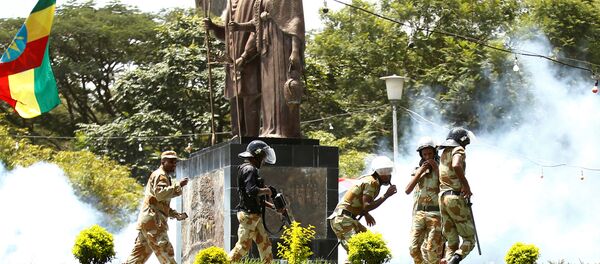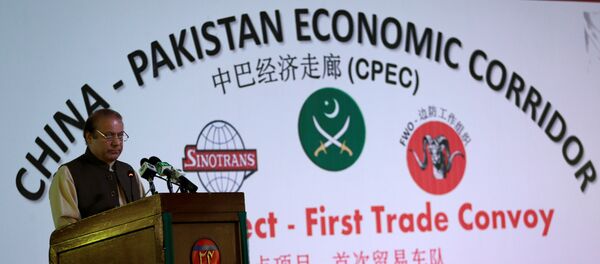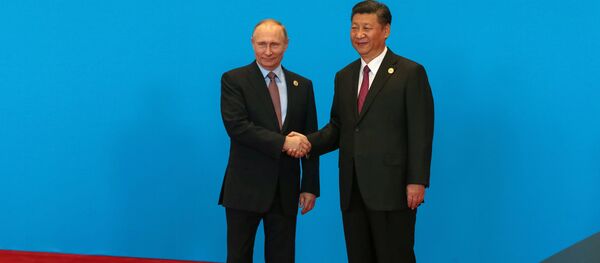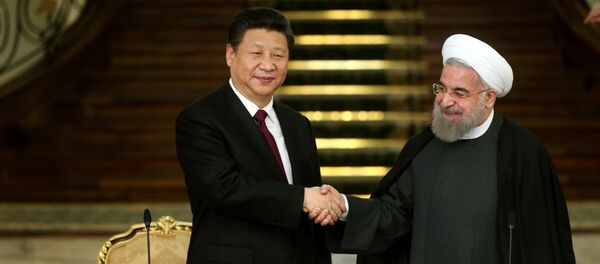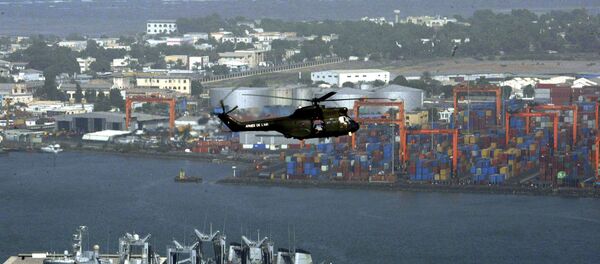By now, everyone in the world is familiar with China’s One Belt One Road (OBOR) global vision of New Silk Road connectivity, though not many people are aware of the joint Indo-Japanese response of the Asia Africa Growth Corridor (AAGC), also called the “Freedom Corridor”. This initiative stems from a November 2016 joint declaration by Indian Prime Minister Narendra Modi and his Japanese counterpart Shinzo Abe to cooperate in building infrastructure projects all across the Indo-Pacific Rimland.
Although no overt American participation has been announced as of yet, the very fact that it’s being touted as the “Freedom Corridor” carries heavy overtones of American influence, and it can be reasonably presumed that the US has an interest in supporting any connectivity projects which compete with China’s.
The same pattern of transitioning Color Revolutions into Unconventional Wars (or vice-versa) is even more applicable and comparatively easier to pull off in the three geopolitical zones of competition between OBOR and the “Freedom Corridor”, so it’s expected that Hybrid War will continue to remain one of the most dominant trends of the 21st century as the US actively seeks to subvert its Chinese rival all across the world in order to give a boost to its Indo-Japanese “Lead From Behind” partners.
New Silk Road Fundamentals And 21st-Century Geostrategy
This was reviewed in the author’s earlier Sputnik analysis titled “What’s CPEC, And How Does The Future Of The Multipolar World Depend On It?”, which explained how the New Cold War is really all about the resultant friction between the stakeholders of the existing global system and those who are challenging it, or in other words, the US and its unipolar allies (rather, underlings/vassals) versus China, Russia, and their multipolar partners.
OBOR is understood in this context as being the vehicle by which Beijing can catalyze an irreversible change in the strategic balance of power through the pioneering of new trade routes and markets, and the China-Pakistan Economic Corridor (CPEC) is the flagship of this initiative because it aims to provide China with reliable non-Malacca access to the Indian Ocean.
Due to the game-changing dynamics behind this project, a vicious Hybrid War has been unleashed against CPEC in the Pakistani province of Balochistan, though it’s thus far been unable to impede the geostrategic attractiveness of this route because of the heavy security that Islamabad has committed to protecting it.
There are also supplementary projects such as the possible Himalayan Silk Road with Nepal and the stalled BCIM Economic Corridor with Bangladesh, India, and Myanmar, but they won’t figure into the present analysis. Instead, this article will take a look at the intersection points between OBOR and the “Freedom Corridor” and explain the regional variables which could be weaponized against Beijing to the relative benefit of the US’ allies in New Delhi and Tokyo.
Going Head-To-Head In “Greater South Asia”
East Africa comes into the mix because it’s located on the western edge of the Indian Ocean (the maritime frontier of South Asia) and was correctly forecast to be the center of Chinese-Indian competition in the continent. Seeing as how Beijing’s engagement with East Africa will increasingly come to rely on the South Asian CPEC port of Gwadar in the future, it’s only reasonable to broaden the concept of “Greater South Asia” to include this part of the Indo-Pacific region alongside Central Asia and ASEAN. Moreover, India and Pakistan’s Chinese partner both have infrastructure interests in Iran, which is no historical stranger to the South Asian region, so the Islamic Republic is also naturally included in this geographic model as well.
Crashing The Connectivity Party
ASEAN:
China’s ASEAN Silk Road is a high-speed rail corridor from the Yunnan capital of Kunming to Singapore, passing through Laos, Thailand, and Malaysia along the way, and there’s also the hope that a separate Myanmar-focused branch can one day be built parallel to the Kyaukphyu Pipeline in complementing CPEC’s Indian Ocean connectivity.
As for India-Japan, their connectivity plans run perpendicular to China’s and integrate the western and eastern reaches of Indochina. India is building the Trilateral Highway with Myanmar and Thailand, while Japan is spearheading the East-West and Southern Corridors from southeastern coastal Myanmar to Vietnam. Both sides will cooperate on each other’s projects and also in joint investments in India’s Andaman and Nicobar Islands.
The most disruptive Hybrid War scenarios in what is technically referred to as the “Greater Mekong Subregion” are an expansion of Myanmar’s civil war and “red shirt” opposition unrest in the group’s northeastern Thai base of “Isan”, both of which would interfere more with China’s projects than India-Japan’s. Even if the unlikely worst-case event where both transit states are largely destabilized, the “Freedom Corridor” can still survive via the more strategically secure Southern Corridor and India-Japan’s outposts in the Andaman and Nicobar Islands.
Central Asia-Iran:
From there, they envision branching out in two principle directions – northeast into Afghanistan and the Central Asian Republics, and northwest through Azerbaijan and Russia en route to the EU (as per the North-South Transport Corridor’s master plan). Iran is also toying with the idea of a Persian Gulf-Black Sea Corridor through Armenia and Georgia which could complement the NSTC.
Central Asia is stable for the time being, but China’s plans could hit a major roadblock if transnational violence is triggered in the densely populated Fergana Valley by Afghan-originating Daesh terrorist attacks and/or a return to the brief but bloody 2010 ethnic pogroms between Kyrgyz and Uzbeks. The inevitable leadership transition in Tajikistan might also not be as smooth as it was in Uzbekistan, potentially opening up a wide range of internal conflict scenarios.
As for Iran, it will probably suffer blowback from the Hybrid War on CPEC as third-party-supported Baloch terrorism spills across the border from the Pakistani namesake province to the Iranian one, potentially impacting on Chabahar. In that case, India and Japan could just relocate their base of operations to Bandar Abbas instead, though accepting that any Afghan-Central Asian connectivity from there would be more costly.
Moreover, although the odds are dismal, there’s a chance that the US could provoke unforeseen problems between Russia and its other two main Great Power partners on the NTSC which could result in Iran’s Persian Gulf-Black Sea Corridor becoming the sole north-south gateway between India and the EU, thereby effectively cutting Russia completely out of this transcontinental trade route.
East Africa:
India and Japan have yet to announce any similarly ambitious projects, though the “Freedom Corridor” is reportedly going to focus on something called the “Kenya-Tanzania-Mozambique (KTM) growth zone”, which basically means that these two Great Powers are coastal-focused in their joint East African infrastructure efforts. China, however, is looking to deepen its reach into the continental interior, which means that destabilizations there such as the Hybrid War on Ethiopia and the impending slow-motion collapse of the Congo could harm its core interests while leaving India and Japan’s largely unscathed.
— --------
All in all, the US can crash China’s hemispheric connectivity plans through the strategic provocation of Hybrid War in some of the most important transit states along its New Silk Roads, and the successful completion of these briefly touched-upon proxy campaigns could “level the playing field” to India and Japan’s competitive advantage in the New Cold War.
The views expressed in this article are solely those of the author and do not necessarily reflect the official position of Sputnik.




